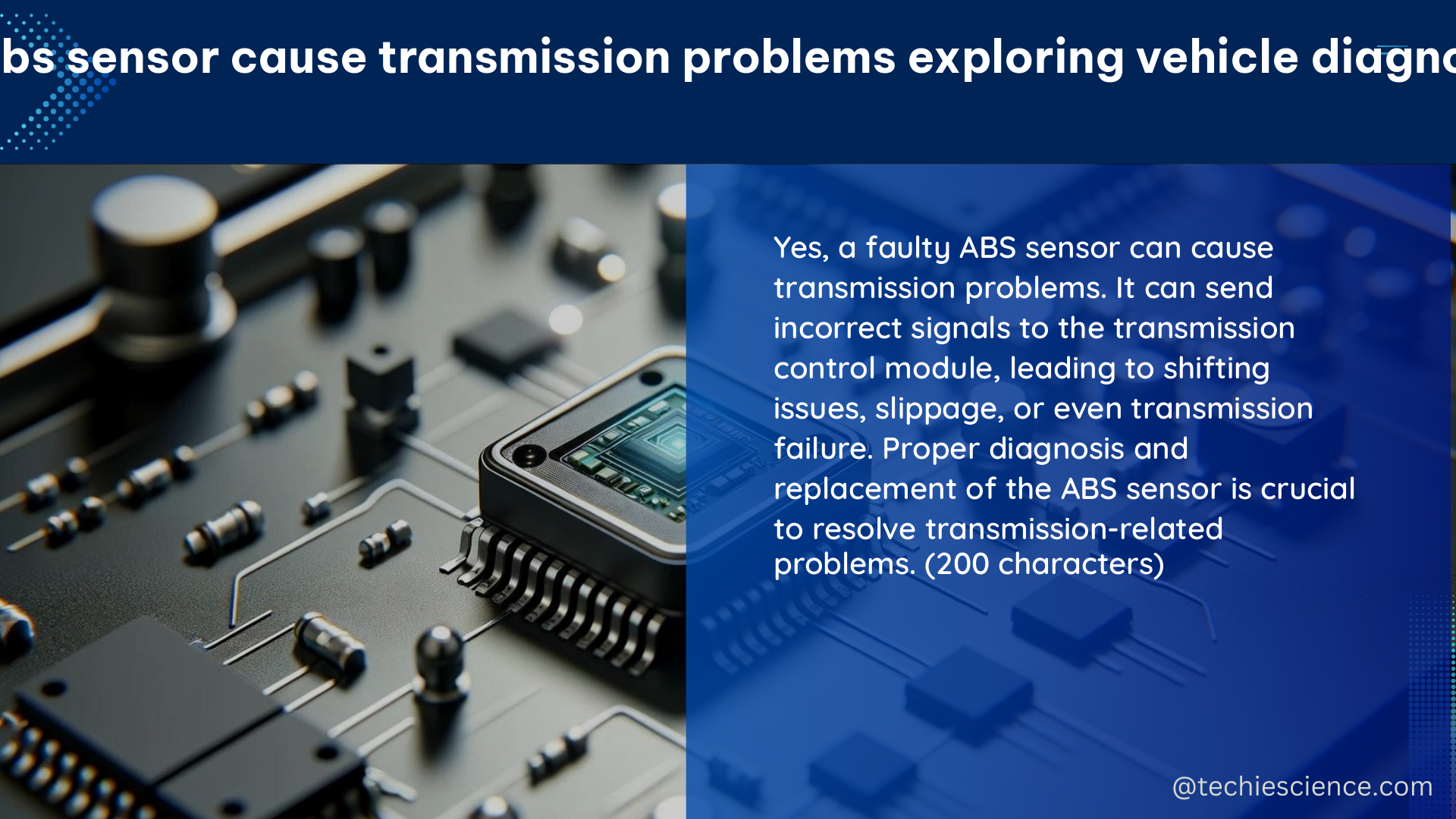The Anti-lock Braking System (ABS) sensor plays a crucial role in the proper functioning of the ABS system, which is responsible for preventing the wheels of a vehicle from locking up during braking. This sensor communicates the wheel speed to the ABS control unit, allowing it to adjust the braking force accordingly and maintain tractive contact, avoiding uncontrolled skidding. However, a faulty ABS sensor can potentially cause transmission problems, as the issues with the braking system can have a ripple effect on other components, including the transmission.
Understanding the Relationship between ABS Sensors and Transmission
When the ABS system is not functioning correctly due to a faulty sensor, it can cause the vehicle to brake harder or more abruptly than intended. This additional stress on the braking system can be transferred to the transmission, potentially leading to various issues, such as:
-
Slipping Transmission: If the ABS sensor is not accurately reporting the wheel speed, the ABS system may not be able to properly modulate the braking force. This can result in the wheels locking up, which can then cause the transmission to slip as it struggles to transmit power to the wheels.
-
Jerking or Shuddering Transmission: A faulty ABS sensor can cause the ABS system to engage and disengage rapidly, leading to a jerking or shuddering sensation in the transmission as it tries to compensate for the inconsistent braking.
-
Difficulty Shifting Gears: The additional stress on the transmission caused by a malfunctioning ABS system can make it more difficult for the transmission to smoothly shift between gears, leading to a rough or delayed gear change.
Key Specifications and Measurements for ABS Sensors

To diagnose and address any potential issues with the ABS sensor, it’s important to understand the key values and specifications associated with these components. Some of the critical measurements to consider include:
Resistance
The resistance of a passive ABS sensor typically falls within a range of 1,000 to 2,500 ohms. Any significant deviation from this range may indicate a problem with the sensor.
Voltage
The voltage supplied to the ABS sensor can also be an important value to measure. Some vehicles provide a DC voltage to the sensor through the ground wire, allowing the sensor to be tested without the vehicle moving.
Frequency
The frequency of the signal produced by the ABS sensor is related to the wheel speed and can be measured using a multimeter or oscilloscope. Monitoring this frequency can help identify any issues with the sensor or the surrounding circuitry.
Testing and Diagnosing ABS Sensor Issues
To test an ABS sensor, one approach is to use a multimeter to measure the resistance and voltage, as well as to observe the signal produced by the sensor while spinning the wheel. This can help to identify any issues with the sensor or the surrounding circuitry.
When diagnosing transmission problems that may be related to a faulty ABS sensor, it’s important to first rule out other potential causes, such as low transmission fluid levels or issues with the clutch system. Once these have been addressed, a thorough inspection of the ABS system, including the sensor and surrounding circuitry, may be necessary to identify any issues.
Preventive Maintenance and Troubleshooting
To prevent ABS sensor-related transmission problems, it’s essential to regularly maintain the ABS system and monitor the sensor’s performance. This can include:
-
Periodic Inspection: Regularly inspecting the ABS sensor for signs of wear, damage, or contamination, such as debris buildup, can help identify potential issues before they lead to more significant problems.
-
Sensor Replacement: If the ABS sensor is found to be faulty, it should be replaced promptly to ensure the proper functioning of the ABS system and prevent any adverse effects on the transmission.
-
Electrical System Diagnostics: Checking the electrical connections and wiring associated with the ABS sensor can help identify any issues with the sensor’s power supply or signal transmission, which could also impact the transmission.
-
Wheel Speed Monitoring: Closely monitoring the wheel speed readings from the ABS sensor can help detect any discrepancies or inconsistencies that may indicate a problem with the sensor or the overall ABS system.
By understanding the relationship between ABS sensors and transmission problems, as well as the key specifications and diagnostic techniques, technicians can more effectively identify and address any issues that may arise, ensuring the smooth and reliable operation of the vehicle’s braking and transmission systems.
References:
- Testing an ABS Sensor with a Multimeter
- ABS Sensors: A Techmate Guide
- Wheel Speed Sensor Diagnostics for Meters and Scopes
- Understanding ABS Sensor Resistance and Voltage
- Diagnosing ABS Sensor Failures

The lambdageeks.com Core SME Team is a group of experienced subject matter experts from diverse scientific and technical fields including Physics, Chemistry, Technology,Electronics & Electrical Engineering, Automotive, Mechanical Engineering. Our team collaborates to create high-quality, well-researched articles on a wide range of science and technology topics for the lambdageeks.com website.
All Our Senior SME are having more than 7 Years of experience in the respective fields . They are either Working Industry Professionals or assocaited With different Universities. Refer Our Authors Page to get to know About our Core SMEs.